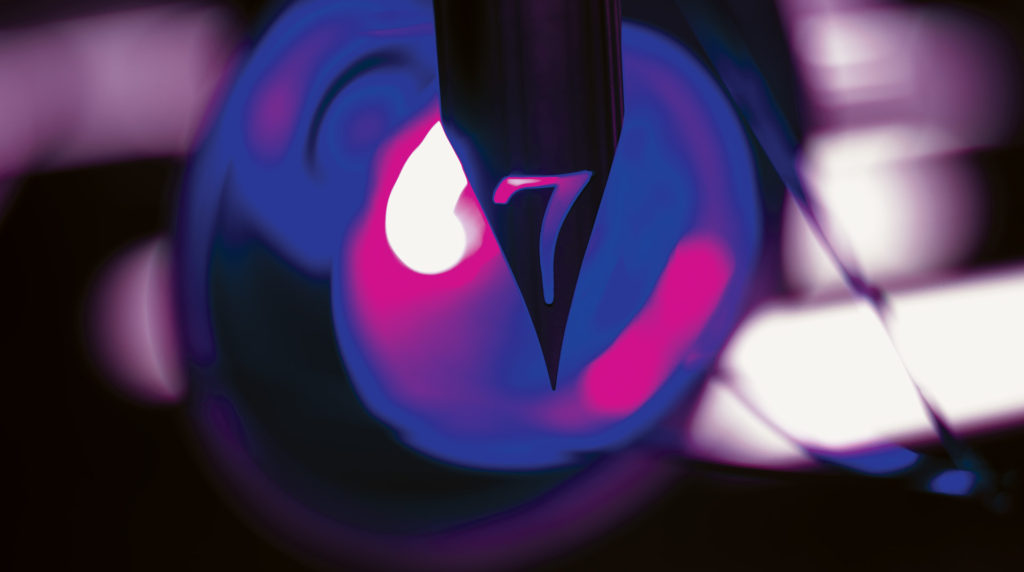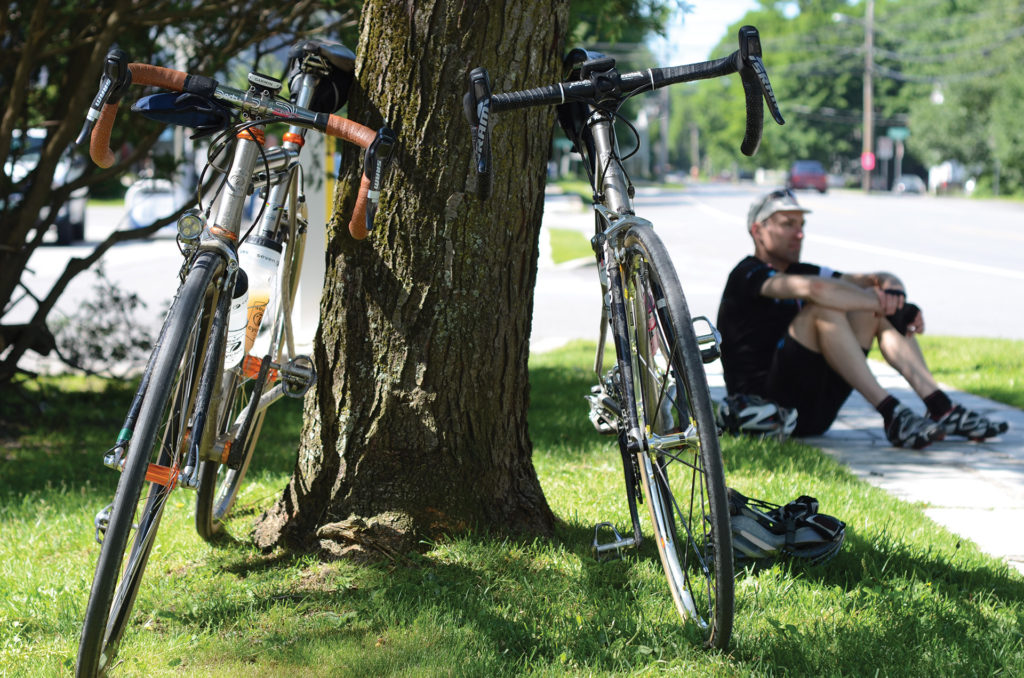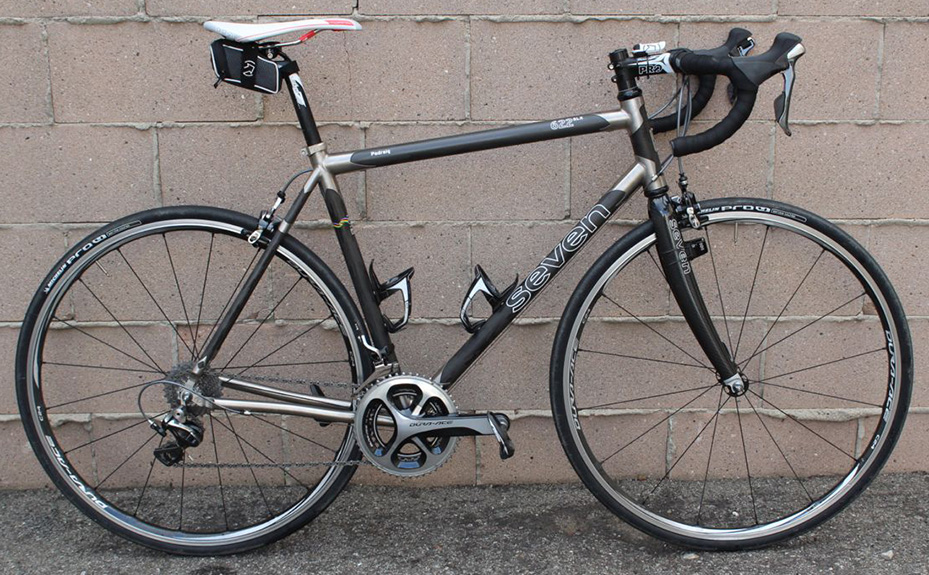Words: Ben EdwardsImages: Seven Cycles
Boston was home to the most famous metal worker in American history, a silversmith named Paul Revere. Fittingly, it’s also the home of a man who could be the most famous metal worker in cycling, Rob Vandermark. We say “could” because his name will not appear on the down tube of the frame.
Founder and president of Seven Cycles, Vandermark’s desire to work under a name that has many different meanings for many different people is an example of why Seven has been so successful. Rob, and the rest of the Seven Cycles team, build custom bikes with a customer-focused process. While this seems redundant—isn’t custom always customer focused?— it’s actually a refreshing change in the custom world. Custom seems to have been hijacked by enigmatic so-called gurus proud of five-year lead times or uber-hipsters that spend an inordinate amount of time on a head badge design. A comment by Vandermark truly highlights the differences: “You know, we don’t sell bikes, per se. I mean, we do, but there’s a lot more going on with a custom bike than just the frame.”
What Seven Cycles has succeeded in doing is creating a process that has collaboration at its core. Seven simply becomes a tool that allows riders to become their own custom builder.
“It’s a whole experience, and there are always new customers who are looking for a new, more intimate cycling experience,” Vandermark explained. “I hope we’ve found some success in the way we engage each rider, because we listen, because the resulting bike is so clearly a collaboration between the rider, Seven, and the retailer. These are all reasons that Seven has continuously grown. We answer an interest that some cyclists have to individualize their bikes.”
Vandermark’s journey, and the experiences that fostered the core ideals behind Seven Cycles, began in a typical place, the bike shop. As a young road racer working in a bike shop, Vandermark was immersed in the technichal side of the sport, “obsessed with the mechanical aspects of cycling” is how he puts it. When the mountain bike entered his life in the 80’s, Vandermark found his true racing passion, and it is a passion reflected in what may be Seven Cycles’ greatest achievement (but more about that later).
The transition from shop wrench to frame builder really took off when Vandermark was in college. By day he was studying sculpture, and during his free time his skill as a frame builder rapidly increased. While grounding his frame building passion in serious technical knowledge, Vandermark credits his sculpture background, a rarity in the engineering-focused world of bike design, as one of his greatest assets.

“I think there are two main ways my sculpture background affects the way I work with my hands, and I think in three dimensions. This is a bit of an old-school design approach rather than an engineering approach. I’m fascinated by engineering, and I’ve spent years learning about material properties, fatigue modes, and more. And, I grew up in the art world, so, I like to work on both the design side and the engineering side at Seven. While Seven definitely focuses on function over form, I try to sneak in some form once in a while. I believe that good design inherently addresses engineering requirements.
While collecting college credits, a call came that the frame building obsessed Vandermark could not ignore. Merlin Metalworks, the Ti pioneers, offered him a job. Vandermark dropped out of college and his hobby became his vocation. Merlin proved to be the ideal environment for his burgeoning talent.
“One of the really nice aspects about the early years at Merlin was that we were really encouraged to try new ideas,” Vandermark remembers. “If you were willing to be there and work, you could explore any concept. We would ride during the day during the day a lot of the time, and then get to work late and try out really bad ideas. It was just a very free-thinking, inspiring time to be building bikes. My entry into frame design was really just a function of some of the concept I was working on after hours coming to fruition and sometime making sense in the context of Merlin’s business philosophy and product line.”

As titanium became the most sought after bicycle material prior to carbon, Merlin experienced massive growth and Vandermark grew along with them. While he was their head of research and development, he still continued to experiment on the shop floor—a habit he has taken to Seven.
“Even now, at Seven, while I’m not building bikes, I am still out on the floor regularly, testing ideas, messing with materials. I love to try new ideas, and that means dirty hands. Really, if you’re going to follow your curiosity and your passion, you’re going to end up with dirty hands, right?”, says Vandermark.
As Merlin went through the ups and downs of the cycling business and multiple owners in rapid succession, Vandermark decided the time was right to move on. Along with the other founding members of Seven Cycles, Vandermark felt the lessons learned at Merlin could be applied to new production methods and allow them to create custom bikes on a huge scale. It’s proved to be true, Seven is the largest custom builder in the world. What were those lessons?
“Merlin gave me an opportunity to explore frame design and material science. I got an exposure to different production methods and innovative ideas. So many of the ideas I encountered at Merlin, maybe even if we didn’t put them into practice there, have had an impact on Seven. A few of the most influential lessons I took from Merlin included providing a lot of latitude and autonomy to experiment and fail, not taking advantage of employees’ love of cycling, and knowing that what was good yesterday is not enough today—nothing in the bike world is ever complete,” says Vandermark.
So how does the largest custom builder in the world keep the custom experience personal? On its surface it seems an oxymoron, but it comes from taking a very personal experience and simply multiplying the process. Whether they make a single bike or a thousand, each rider is treated the same way.
We are hearing their dreams, listening to their ideas. This is why process is so important really, so we can maintain that connection. Once you lose it, you’re just building bikes and trying to get people to buy them, rather than building the exact bike the rider wants, which is what we set out to do. That’s our obsession.”

Vandermark continues: “Each of us has a riding experience that is personal, unique, and extremely special to us. That is the most precious element of what we do. To build great bikes, we believe you have to access that experience, and we advise on design elements, but we hope the rider’s ideas and intents are clearly evident, too. We’ve designed our whole interview and design process to give the rider a voice, to allow us to capture the customer’s thoughts. If the rider’s ideas and aspirations are not recognizable in the resulting bike, then we’ve failed.”
Founded in 1997, Seven Cycles delivered their very first frames only a few short weeks later, and they have continued to deliver their custom bikes in a timely fashion—typically three to five weeks. This can occasionally stretch to two months in peak season, but in much of the custom world just getting a response to an e-mail can take longer.
While Seven is only sixteen years old, Vandermark is hesitant to point out any one moment as the company’s high point to date. But eventually the passionate mountain bike racer emerges and he reminisces about Mary McConneloug and her Sola SLX.
“There are so many milestones for us with mountain bikes. We came from mountain biking. We, all the founders, raced dirt, so though we build all types of bikes for all types of riders, our sole is maybe really in mountain biking. Pushing at what the materials can do, titanium, Ti/carbon mixes, steel—those make nice marks on a timeline, but the single biggest deal for us on the dirt side is Mary McConneloug racing her Seven Sola SLX at the 2004 Olympics, then doing the World Cup on that same bike for four years, and finally racing the 2008 Olympics on it. The same exact frame. For us, it was a beautiful validation of the durability of both our design ideas and our build methods. Between those two Olympics there wasn’t another bike that got even close to that kind of punishment and that kind of performance. We’re very proud of that.”
As the mountain bike has developed, so has Seven. While they have employed full-suspension designs from Paul Turner and Dave Weagle, they have always started from a custom philosophy, which has had its challenges on the suspension front.
“Historically, the challenge for suspension with Seven has been finding the right balance between optimizing the suspension travel and system with while also providing all of Seven’s customization elements,” says Vandermark. “Combining these two worlds is complicated. We’re not offering three or five sizes of 120-mm travel bikes, we’re offering infinite possibilities of center of gravity, rider use and style, wheel size options, fork types, and even brake systems. Getting pivot locations, suspension progression, and travel optimized within this endless list of customization is a long-haul challenge.”
While Seven is not currently offering a full-suspension bike, Vandermark feels much of what a full-suspension bike offers is already addressed by the custom process. “A properly fitting, custom designed bike will be more comfortable over the long haul than any adapted stock bike. One of the reasons for this is that a fitted stock bike will have a less-than-ideal handling; your center of gravity and balance will not be perfect between the wheels.

“Then, there are a number of refinements we make to a titanium frame for any rider. The first is a custom selected tube set. We look at who the rider is, where and how the cyclist wants to ride, and we pick raw tubes that match. We can then butt those tubes to give a very specific amount of compliance, basically dialing-in the comfort of the bike, so the endurance cyclist can ride all day without getting beaten up by the bike.”
Vandermark continues: “Titanium, thoughtfully applied, allows us to leverage the bike’s vertical compliance—or plushness—better than any other material. This type of compliance not only provides a bike that is smoother through rough terrain, but it also improves handling. It helps enhance the application of body English, and it improves tire traction so you have more control, improved climbing, and better acceleration.”
While Vandermark has made his name in titanium, Seven is material agnostic. It all comes back to the original concept of using Seven Cycles as a tool that allows riders to be their own custom builder: “It really depends on what the rider wants the ride to feel. We like to start there, rather than prescribing one solution for everyone. It’s amazing how many times riders come to us with preconceived notions about a material, based on marketing or maybe what friends tell them. We try to help each rider see the possible benefits and considerations of each material, and guide the cyclist to the ideal choice based on individual preferences. We enjoy building every bike, regardless of material, as long as it’s going to suit the rider.”
Vandermark approaches the ongoing wheel size debate in much the same way. “We’ve built 29ers for people under 5’3″ because they felt strongly they wanted the ride qualities of the larger wheel. We do sometimes recommend other sizes to riders, if they seem open, and we believe it will enhance their riding, but again, that is always based on the things they tell us about how they want to ride. As designers we’re comfortable with all of the size options, and each size has its strengths and weaknesses.”
Wile an eloquent spokesman for the brand, Rob Vandermark is very quick to point out Seven Cycles is so much more than his company, It’s a collective that starts with original founders: Vandermark, Jennifer Miller, Matt O’Keefe and Lisa Rodier. They came from Merlin together and have all helped create what Seven Cycles today. Many of the production staff are Merlin veterans and have been building frames for a lifetime. Together they create highly engineered bicycles with a deeply intuitive and thoughtful process. It requires dedication to not only craftsmanship, but communication as well. Creating the largest custom frame house in the world with that philosophy, and then remaining true to it, may seem like a difficult task, but Rob Vandermark sums it up simply:
“We build the bikes our customers dream for themselves.”













